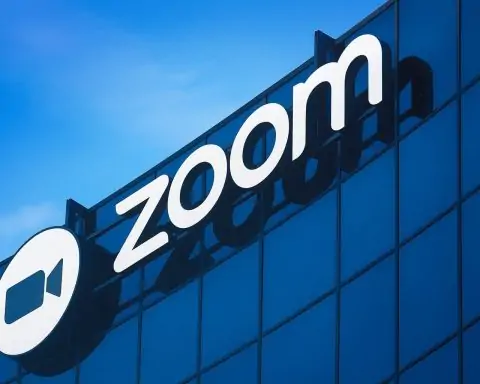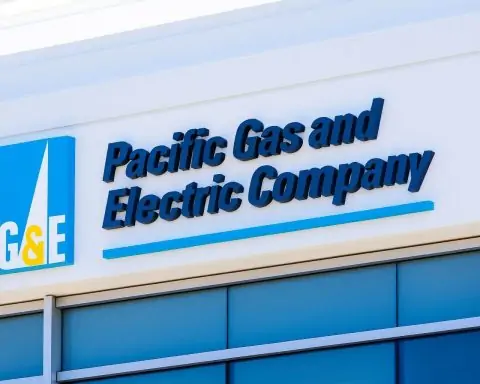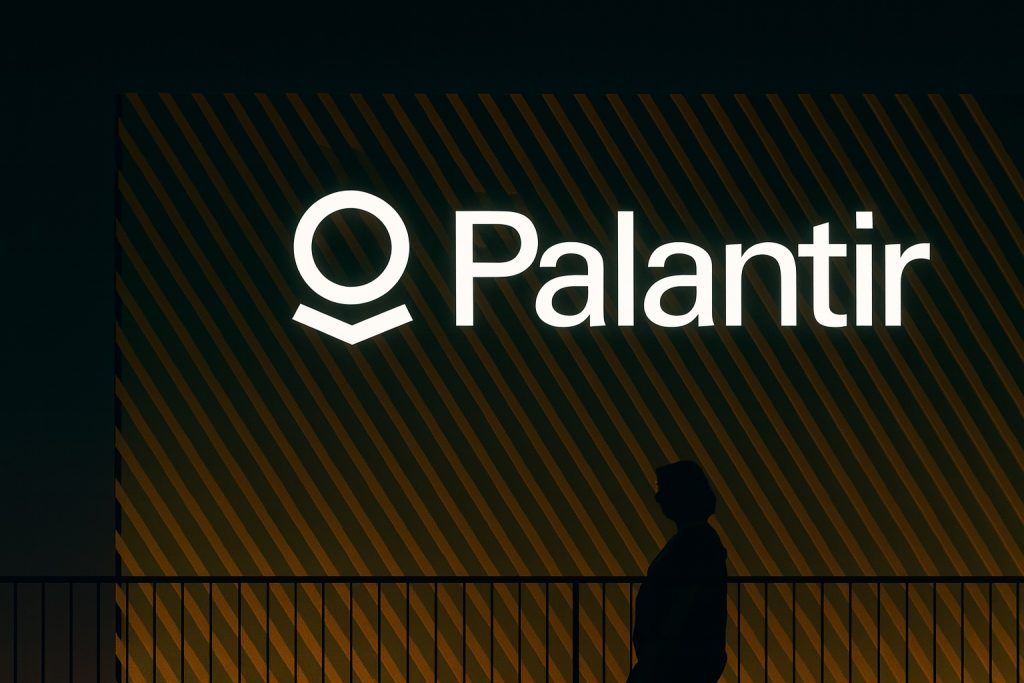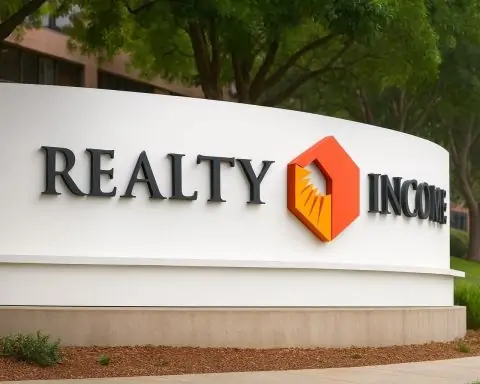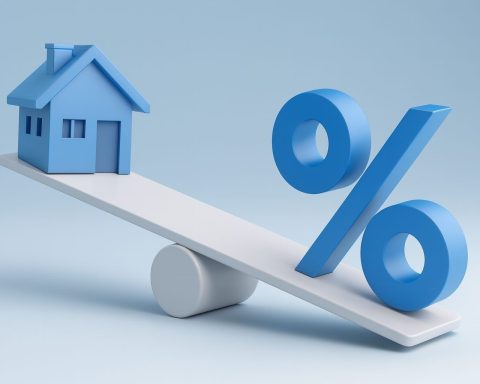- Stock Surge & Plunge: Cavco Industries’ share price hit a 52-week high of $574.20 in late September, then plummeted ~12.6% on Oct 6 to close around $498.60 [1] [2]. Despite this volatility, the stock remained up ~30% year-to-date [3]. Cavco’s market capitalization stood near $3.9–4.5 billion around early October [4] [5].
- Robust Financials: Recent earnings were strong – Q1 FY2026 revenue $557 million (+16.6% YoY) with a 56% jump in EPS to $6.42 [6] [7]. Trailing 12-month revenue is about $2.09 billion, and Cavco boasts solid margins (net margin ~8.99%; operating margin ~10% [8]). The balance sheet is healthy (minimal debt, debt/equity ~0.03, and a current ratio ~2.9 for ample liquidity [9]).
- Acquisition News: Cavco completed the $190 million acquisition of American Homestar Corp (dba Oak Creek Homes) in late September [10] [11]. American Homestar is a Texas-based manufacturer & retailer with $194 M annual revenue and 1,676 homes produced in the last year [12]. Cavco funded the deal entirely with cash and expects it to be accretive to earnings, expanding Cavco’s footprint in the vital Texas/South-Central housing market [13].
- Analyst Sentiment: Wall Street’s view on CVCO is cautiously optimistic. The stock has a consensus “Moderate Buy” rating with an average price target in the $520s [14]. Wedbush recently reiterated a “Neutral” rating (TP $550) [15], reflecting that Cavco’s late-September price had overshot some targets. Analysts forecast full-year EPS around $21.9, implying continued growth [16].
- Market Mood: Investor sentiment is mixed amid volatility. The early-October sell-off (–7% intraday, –12% by close) was attributed to “broader market volatility” and profit-taking, rather than company-specific issues [17] [18]. Technical indicators showed CVCO was nearing overbought levels (RSI ~69) before the pullback [19]. Notably, insiders have trimmed some holdings on strength (e.g. a director sold shares near ~$520 in August) [20], hinting at valuation concerns.
Stock Performance Snapshot (Oct 2025)
Cavco’s stock went on a rollercoaster ride in late 2025. After a steady rally through the year (+30% YTD by early October [21]), CVCO surged to an all-time high around $574 per share [22]. This run-up coincided with strong earnings and optimism around affordable housing. However, on October 6, the stock sharply reversed, dropping from the mid-$570s to the high-$490s in a single session (a −12.6% plunge intraday) [23] [24].
This sudden sell-off wiped out about $72 per share, reflecting broader market turbulence rather than any negative Cavco news [25]. Indeed, analysts noted the downturn “may be attributed to broader market conditions or investor sentiment” not swayed by Cavco’s positive fundamentals [26]. Even after the pullback, Cavco’s year-to-date gains were intact, and its market cap hovered near $4 billion [27]. The stock’s P/E ratio around 22–24 is somewhat above historical averages, suggesting the stock isn’t cheap at current levels [28]. Technical signals before the drop (like a high RSI) indicated the stock was nearing overbought territory, which likely contributed to the short-term correction [29].
Despite recent volatility, Cavco’s underlying performance remains strong. The company’s trailing financials and balance sheet are robust (as detailed below), which provides some fundamental support for the stock. Investors are now watching if Cavco can stabilize after the early-October dip or if further market jitters will keep the stock choppy in the short term. The next catalyst on the horizon is Cavco’s upcoming earnings (expected Oct 30, 2025), which will shed more light on its momentum going into late 2025.
Recent News: Acquisition & Early October Developments
American Homestar Acquisition: Cavco’s headline news this quarter was its expansion move – on Sept 29, 2025, the company completed the acquisition of American Homestar Corporation, a major Texas-based manufactured home builder and retailer [30]. American Homestar (known by its Oak Creek Homes brand) operates 2 factories and 19 sales centers across Texas and neighboring states [31] [32]. With ~800 employees and $194 million in annual revenue, it was a sizeable regional player [33]. Cavco paid $190 million in cash for the business, indicating a moderate ~1x sales multiple.
According to the press release, Cavco’s management is enthusiastic about the deal’s strategic fit. “American Homestar is a leader in our industry because it embodies the Teeters’ values and focus on providing quality homes for deserving families,” said Cavco CEO Bill Boor, praising the seller’s legacy [34] [35]. American Homestar’s CEO Dwayne Teeter likewise noted the “perfect cultural fit” and said his team is “excited to join forces in the South Central U.S.” as part of a dynamic, growing company [36].
Strategic Rationale: The acquisition bolsters Cavco’s presence in one of the nation’s hottest manufactured housing markets – Texas. Key expected benefits include:
- Accretion and Synergies: Cavco projects the deal will be accretive to earnings and cash flow immediately [37]. Shared best practices and combined purchasing should yield cost synergies and product optimization opportunities.
- Market Expansion: Texas and the South-Central U.S. are critical for manufactured housing. Adding American Homestar’s footprint strengthens Cavco’s distribution and production network in this high-demand region [38]. Cavco effectively secures a larger share of a market where affordable housing demand is surging.
- Cash Deployment: The $190 million price was funded entirely from Cavco’s cash reserves [39]. Even after this outlay, Cavco noted it maintains a significant cash position for further strategic investments [40]. This indicates a strong balance sheet – Cavco can grow via acquisitions without straining its finances.
Early October Market Reactions: Interestingly, the stock’s early-October swoon came despite the positive acquisition news. Cavco’s completion of the American Homestar deal was announced just days before the stock fell. In fact, the lack of a rally on that news and the subsequent drop suggest investors were more focused on macro factors (like interest rates and overall market swings) than on Cavco-specific developments. As TipRanks observed, Cavco’s 7%+ price decline in that period was “despite the company’s recent announcement” of the acquisition, implying that good news was overshadowed [41].
There were a few other Cavco-related tidbits in early October: for example, an investment firm disclosed a modest increase in its CVCO holdings [42], and financial blogs noted insider selling activity. According to filings, a Cavco director sold ~2,500 shares in late August at ~$519, and the Chief Accounting Officer sold 300 shares at ~$530 [43] [44]. These insider sales (totaling about $1.3 million [45]) suggest some insiders took profits near peak prices. While not alarming in isolation, such moves can signal that management saw the stock as fairly valued around those highs.
Expert Quotes & Market Sentiment
Despite near-term volatility, many experts remain upbeat about Cavco’s niche in affordable housing. As one analyst put it, “AI is big, but AH (Affordable Housing) is a more critical need” – pointing out that housing affordability has become a vital growth theme in its own right [46]. In a September 2024 Seeking Alpha analysis, Marc Gerstein argued that Cavco and its peers were outperforming what high interest rates alone might predict because “investors are looking beyond today’s soft company earnings toward gains many expect as society tackles affordability obstacles.” In other words, the market anticipates that pent-up demand for affordable homes will eventually translate into robust sales for companies like Cavco once economic conditions improve [47].
Moreover, Gerstein noted that “manufactured-housing company Cavco is well positioned to capitalize on the more affordable direction in which the industry is going.” [48]. This reflects a sentiment that Cavco’s focus on factory-built homes aligns well with the broader shift toward lower-cost housing solutions. Indeed, Cavco’s ability to produce homes efficiently at a lower price point is seen as a key advantage as homebuyers seek relief from record-high housing prices.
That said, not all commentary has been rosy. Zacks Investment Research in mid-2025 flagged one of Cavco’s main rivals, Skyline Champion (NYSE: SKY), as a “Bear of the Day,” citing industry challenges that could also impact Cavco. The Zacks report highlighted that higher interest rates were squeezing margins and deflating investor sentiment in the manufactured housing sector [49]. “Champion Homes has a proven niche but is facing increased competition from other modular housing companies like Clayton Homes and Cavco’s Fleetwood Homes,” the report observed [50]. This competitive pressure, “coupled with higher interest rates, has led to lower margins” for industry players [51]. In Skyline Champion’s case, its stock had dropped over 30% from spring to mid-2025 [52], and short interest was rising – signs of skepticism that likely cast a shadow on the whole sector, including Cavco.
Analyst Ratings: On Wall Street, the consensus on Cavco is moderately positive but tempered. According to MarketBeat data, Cavco currently has 1 “Buy” and 1 “Hold” rating (among major analysts), equating to a “Moderate Buy” average rating [53]. The average 12-month price target is about $522.50 per share [54] [55]. Notably, this target was below Cavco’s peak price – indicating that after the late-September rally, the stock was trading ahead of analyst expectations. Wedbush Securities, for instance, maintained a neutral stance, with a $550 target (issued in August) [56], while another research firm downgraded CVCO from Buy to Hold back in July as the stock climbed [57]. This suggests analysts liked Cavco’s fundamentals but grew cautious as the valuation became less of a bargain at 20+ times earnings.
In terms of market sentiment, GuruFocus reported that Cavco’s recommendation score is about 2.3 (on a scale where 1.0 is Strong Buy and 5.0 is Sell) – reinforcing the view of a mild buy consensus [58]. Meanwhile, quantitative signals have been mixed: TipRanks’ technical analysis had a “Buy” signal on CVCO as of early October [59], but momentum reversed with the broader market pullback. Overall, sentiment is positive on Cavco’s long-term story (affordable housing demand), yet short-term caution is evident due to interest rate worries and the stock’s own big swings.
Financial Forecasts & Outlook
Looking ahead, earnings forecasts for Cavco remain optimistic. The company impressed with its first fiscal quarter results in July, and analysts expect solid performance for the full fiscal year 2026. The current consensus calls for roughly $21.9 in EPS for FY2026 [60]. If achieved, that would mark healthy growth from the prior year, underlining Cavco’s earnings momentum as it sells more homes and integrates acquisitions. Cavco’s trailing P/E around the high-20s to low-20s (depending on the stock price fluctuation) implies the market is pricing in continued earnings growth.
On the revenue side, Cavco’s annual sales are on track to exceed $2 billion for the first time (TTM revenue was ~$2.09B as of Q1) [61]. With American Homestar’s ~$194M in annual sales soon added to Cavco’s results, the company could see a further boost in top-line growth in the coming quarters. Cavco’s own guidance and commentary have been positive – management noted that order backlogs and home sales volume have been improving. In Q1 FY26, home sales volume was up nearly 15% year-over-year and factory utilization rose to ~75% (from 65% a year prior) [62], indicating strengthening demand. This bodes well for the remainder of the year if trends hold.
However, analyst models also factor in some headwinds. High mortgage rates and a slowing economy could temper the pace of new orders in the short term. Some analysts have trimmed their forward estimates for the industry: for example, Zacks noted that earnings estimate revisions for Skyline Champion’s FY2026 dropped over 10% mid-year [63], reflecting a more challenging environment. If credit stays tight or consumer confidence wavers, Cavco’s order flow might similarly face pressure.
That said, Cavco’s leadership believes long-term fundamentals are intact. The acquisition of American Homestar is expected to improve earnings and operational efficiency, which could help offset macro pressures [64]. Cavco’s financial services segment (which offers manufactured home financing and insurance) also swung to a profit contribution, with gross profit margin ~41% in Q1 vs essentially breakeven a year prior [65]. This indicates the company has diversified profit streams beyond just selling homes, which can smooth earnings even if homebuilding margins tighten.
The next major update will come at the end of October 2025 when Cavco reports fiscal Q2 results. Investors and analysts will be watching for any adjustment to full-year guidance, commentary on order rates, and progress on integrating American Homestar. Key indicators to watch include Cavco’s order backlog, gross margins (which were stable at ~22.6% in factory-built housing last quarter) [66], and any changes in expense levels as the company expands. For now, Wall Street’s outlook envisions Cavco continuing to grow profitably, albeit at a potentially moderated pace if the housing market softens temporarily.
Company Background & Strategic Moves
Company Profile: Cavco Industries, founded in 1965, is one of America’s leading producers of factory-built housing. Headquartered in Phoenix, Arizona, Cavco manufactures homes under a portfolio of well-known brands – including Cavco Homes, Fleetwood Homes, and Palm Harbor Homes – which it sells through independent and company-owned retail centers [67]. Its products range from HUD-code manufactured homes and modular homes to park model RVs and cabins. Cavco complements its homebuilding segment with a financial services arm, offering financing and insurance to manufactured home buyers [68]. This two-pronged business model (homes + financing) is similar to industry leader Clayton Homes (a Berkshire Hathaway subsidiary), and it allows Cavco to capture value across the customer lifecycle.
Cavco has grown both organically and through acquisitions. Over the past decade, it has steadily expanded its factory count and geographic reach. Notably, in 2021 Cavco acquired the facilities of Commodore Homes, extending into the Northeast and Midwest markets. The latest American Homestar deal fits a pattern of strategic acquisitions to enter or strengthen key regional markets. Cavco’s CEO Bill Boor, who took the helm in 2019, has emphasized disciplined growth and improving production efficiency. Under his leadership, Cavco navigated the pandemic housing boom and is now focusing on meeting the persistent demand for affordable homes. In the company’s words, Cavco’s mission is to “provide quality, affordable homes” for a broad range of buyers [69] – a mission that resonates strongly amid today’s affordability crisis.
Recent Strategic Initiatives: In addition to acquisitions, Cavco has been innovating in product and marketing strategy. The company has introduced new home models (for example, showcasing modern designs like the “Vivid” and “Atmos” series in 2025) and participated in industry events highlighting manufactured housing as a solution to the affordability gap [70]. Cavco also unified some operations, streamlining its brands and distribution for efficiency (e.g., consolidating certain manufacturing plants or rebranding acquired businesses under the Cavco umbrella). These moves aim to boost Cavco’s economies of scale and brand recognition nationally.
Internally, Cavco points to its strong operational metrics: factory-built housing constitutes the bulk of revenue, and Cavco has kept production costs in check to maintain gross margins around 22–23% [71] even as input costs fluctuated. The company’s backlog and capacity utilization improvements suggest it has ramped up output to meet demand without significant new CapEx – essentially sweating its assets more productively. With American Homestar’s two factories now in the fold, Cavco will have even greater manufacturing capacity in a high-demand region. Cavco’s challenge and opportunity will be to ensure those plants operate at high utilization and contribute to earnings quickly, which management seems confident about.
It’s also worth noting Cavco’s industry role: the firm is an active member of the Manufactured Housing Institute (MHI), the main industry trade group. Cavco has sometimes faced criticism (as have peers) that the industry needs to do more to advocate for HUD-code housing and fight outdated zoning/regulatory barriers [72] [73]. Cavco’s former CEO, Joseph Stegmayer, even tangled with the SEC a few years back (settling allegations in 2021), reminding investors that governance and regulatory compliance are important aspects of the company’s story [74]. Under current leadership, Cavco appears focused on maintaining a clean reputation and pushing for reforms (like better enforcement of federal preemption for manufactured homes) that could unlock further market growth. These background factors provide context for Cavco’s strategic environment, even if they don’t impact day-to-day financials.
Industry & Competitive Landscape
Cavco operates in the factory-built housing industry, which is a subset of the broader homebuilding sector. Its primary competitors include Skyline Champion Corporation (another publicly traded builder of manufactured and modular homes) and Clayton Homes (the largest player, owned by Berkshire Hathaway, and thus not separately traded). There are also smaller regional builders and modular construction startups, but Cavco is among the top 3 in market share for manufactured homes in the U.S.
The industry had a mixed experience in recent years. During 2020–2022, low interest rates and a housing shortage boosted demand for affordable factory-built homes, benefiting companies like Cavco. By 2023–2025, however, the landscape grew more challenging as the Federal Reserve’s interest rate hikes cooled the housing market. High mortgage rates directly affect manufactured home buyers, many of whom finance their purchases. This has led to some softness in orders, even though underlying housing needs remain high. The “housing recession” narrative in 2023–2024 hit traditional homebuilders’ stocks, and manufactured housing stocks were not immune. For instance, Champion Homes (Skyline Champion) saw its stock slide over 30% from its 2023 highs amid margin pressures [75]. Cavco, by comparison, managed to grow earnings and its stock price through that period, but it too saw increased volatility as investors debate how well demand can hold up with 7%+ mortgage rates.
One positive for Cavco is that manufactured homes fill a crucial affordability gap. The average price of a new manufactured home is substantially lower than that of a site-built home. Cavco’s homes can be an attractive option for first-time buyers or retirees looking to downsize. This value proposition has kept consumer interest relatively resilient. A Berkshire Hathaway-linked research report noted that from 2018 to 2023, manufactured home prices rose 58% (due in part to material costs and demand) compared to a 38% increase for site-built homes – indicating strong demand, albeit raising some affordability concerns [76] [77]. Even so, the cost of a manufactured home remains lower in absolute terms, which is a key advantage as long as financing is available.
Competition: Clayton Homes, being the giant, sets the tone in many ways – it has vertical integration (including its own lending arm 21st Mortgage) and far greater production scale. Cavco’s strategy to compete has been focusing on quality and regional strength, plus using its financial services to assist buyers. Skyline Champion (often branded as Champion Homes) is the closest peer; it has similarly been expanding via acquisitions and has a strong presence in various regions. Notably, Zacks pointed out that Champion and Cavco compete closely, and competition has intensified [78]. Both companies are vying for dealer partnerships and land-lease community business. If competitors cut prices to stimulate sales in a slower market, Cavco might face pressure on its margins as well. So far, Cavco’s latest results show steady margins (factory-built housing gross margin steady ~22–23% [79]), implying it hasn’t had to engage in heavy discounting yet.
Another competitor in a broader sense is the traditional site-built home market. Large homebuilders like D.R. Horton and Lennar cater to different segments, but at the lower end they do compete for the same homebuyer dollars. If site-built home prices moderate or if those builders offer incentives (e.g. mortgage rate buydowns), some customers might opt for a conventional home instead of a manufactured one. However, given the ongoing inventory shortage in site-built housing, factory-built homes still have an opening to capture those who simply cannot afford a traditional new home.
On the innovation front, modular construction and prefab techniques are evolving. Startups aiming to modernize factory-built housing (using automation, new materials, etc.) could become future competitors or partners. Cavco has to keep up with technological improvements, though as of 2025 the industry remains fairly traditional in production methods.
Overall, Cavco’s position in the industry is strong – it is a top-tier manufacturer with a broad product line and multi-state reach. The company benefits from industry tailwinds like the push for affordable housing, but it also contends with the cyclical nature of housing demand and competition that keeps pricing in check. The manufactured housing sector is still a relatively small portion of total U.S. housing starts (typically ~10% or less), which means there is room for growth if public perception and financing for these homes improve. Cavco, along with its peers, continuously advocates for things like zoning acceptance of manufactured homes and better secondary market support (e.g., more chattel loan support from Ginnie Mae/Fannie Mae). Progress on those fronts could expand the market for all players.
Broader Economic & Housing Market Factors
Several macro-level factors are influencing Cavco’s current performance and outlook:
- Interest Rates: Perhaps the biggest headwind in 2025 is the multi-year high in interest rates. The U.S. Federal Reserve raised rates aggressively to combat inflation, and 30-year mortgage rates climbed into the 7–8% range – the highest in decades. Since many manufactured home buyers rely on financing (often via chattel loans or mortgages on land-home packages), higher rates dampen purchasing power. This has likely weighed on Cavco’s new order rates and is a key reason investors have turned somewhat cautious on housing-related stocks. As Zacks noted, higher rates have contributed to “lower margins” in the industry and softened sentiment [80]. If interest rates remain elevated or the Fed signals further tightening, it could prolong the pressure on home sales, including factory-built units. Conversely, any hint of rate relief (or creative financing offers) could spur renewed buyer interest in Cavco’s homes.
- Affordable Housing Shortage: On the positive side, the structural demand for affordable housing in the U.S. is enormous. According to the National Association of Home Builders and other experts, the country faces a shortfall of around 7 million affordable housing units [81]. This housing deficit has accumulated over years of under-building. Manufactured housing is seen as one of the solutions to fill this gap, since it can produce homes more quickly and at lower cost. Policymakers have taken note; there are ongoing discussions about improving financing (e.g., Duty to Serve requirements for Fannie Mae/Freddie Mac to support manufactured home loans) and land use reforms to allow more manufactured homes. While change is slow, the overall trend is supportive: society needs more housing, and Cavco’s products directly address that need. This provides a favorable long-term backdrop – as one headline put it, “affordable housing… is becoming a vital growth investment theme” [82].
- General Economic Conditions: The broader economy in late 2025 is a mixed bag. Inflation has cooled from its 2022 peak but remains above target, keeping the Fed cautious. Employment is relatively strong, which helps household formations and homebuying sentiment, but there are recessionary risks on the horizon. For Cavco, a major recession could curtail demand for big-ticket purchases like homes. So far, the U.S. has avoided a deep downturn, and consumer balance sheets have been decent. Cavco’s core customer base (often value-conscious buyers) might actually grow if economic uncertainty pushes people to seek cheaper housing alternatives. However, if unemployment were to rise significantly, all home sales would likely suffer. Cavco’s management has indicated confidence that they can navigate cycles – during the 2008 housing crash, manufactured housing saw a steep decline, but the industry is hoping that this time the chronic under-supply of homes will prevent a total collapse in demand.
- Regulatory and Policy Environment: Federal and state housing policies can impact Cavco. For instance, any incentives for affordable housing development, subsidies for first-time buyers, or tax credits could indirectly benefit manufactured home sales. Conversely, zoning laws in many localities still restrict manufactured homes in certain residential areas, which limits where Cavco’s products can go. There’s an ongoing push (from groups like MHI and MHARR) to enforce “enhanced preemption” under the 2000 HUD code law to override exclusionary zoning [83]. Success on that front could open new markets for Cavco. Environmental and building codes are another factor – as energy efficiency standards rise, Cavco will need to continue upgrading its home specs (which it has been doing, e.g., offering Energy Star rated homes). All told, the policy climate is gradually warming up to factory-built housing as a partial answer to the housing crisis, but obstacles remain. Cavco’s ability to grow may be boosted if more jurisdictions and programs embrace manufactured homes as an affordable solution.
- Broader Market Volatility: As seen in early October, Cavco’s stock can move with the overall stock market. Concerns about inflation, interest rates, or geopolitical events can trigger risk-off sentiment that hits small/mid-cap stocks like Cavco. The 7%+ drop in CVCO on Oct 6 was a prime example, correlating with a broader market sell-off and spike in bond yields [84]. Investors should be aware that Cavco’s beta is around 1.3–1.4, meaning it’s a bit more volatile than the market average [85]. Thus, macro swings can amplify moves in Cavco’s share price even if the company’s fundamentals haven’t changed.
In summary, Cavco Industries sits at the intersection of a pressing societal need (affordable housing) and cyclical market forces (rates and economic swings). The remainder of 2025 will test how well Cavco can maintain its growth trajectory amid these cross-currents. Many signs point to continued strength – a solid backlog, new revenue from American Homestar, and supportive long-term demand. Yet, the company must contend with short-term headwinds like expensive financing for customers and cautious market sentiment. How the broader economy and housing market evolve will significantly influence Cavco’s fortunes, but the company’s recent performance and strategic moves have positioned it to weather the storm and benefit when tailwinds return.
Sources: The information in this report was compiled from Cavco’s official releases and reputable financial news outlets. Key insights were drawn from Cavco’s press statements [86] [87], recent earnings data [88] [89], analyst commentary (e.g. MarketBeat, Seeking Alpha) [90] [91], and industry reports (GuruFocus, Zacks, Yahoo Finance) [92] [93]. These sources collectively provide a comprehensive view of Cavco’s situation as of October 6, 2025. The outlook combines these factual reports with analysis of market trends to present an integrated picture for investors and readers interested in Cavco Industries (NASDAQ: CVCO).
References
1. www.marketbeat.com, 2. finance.yahoo.com, 3. www.tipranks.com, 4. www.gurufocus.com, 5. www.tipranks.com, 6. www.manufacturedhomepronews.com, 7. www.manufacturedhomepronews.com, 8. www.gurufocus.com, 9. www.gurufocus.com, 10. www.tipranks.com, 11. www.nasdaq.com, 12. www.nasdaq.com, 13. www.nasdaq.com, 14. www.marketbeat.com, 15. www.marketbeat.com, 16. www.marketbeat.com, 17. www.gurufocus.com, 18. www.tipranks.com, 19. www.gurufocus.com, 20. www.marketbeat.com, 21. www.tipranks.com, 22. www.marketbeat.com, 23. www.marketbeat.com, 24. finance.yahoo.com, 25. www.gurufocus.com, 26. www.tipranks.com, 27. www.gurufocus.com, 28. www.gurufocus.com, 29. www.gurufocus.com, 30. www.tipranks.com, 31. www.nasdaq.com, 32. www.nasdaq.com, 33. www.nasdaq.com, 34. www.nasdaq.com, 35. www.nasdaq.com, 36. www.nasdaq.com, 37. www.nasdaq.com, 38. www.nasdaq.com, 39. www.nasdaq.com, 40. www.nasdaq.com, 41. www.tipranks.com, 42. www.marketbeat.com, 43. www.marketbeat.com, 44. www.marketbeat.com, 45. simplywall.st, 46. seekingalpha.com, 47. seekingalpha.com, 48. seekingalpha.com, 49. www.nasdaq.com, 50. www.nasdaq.com, 51. www.nasdaq.com, 52. www.nasdaq.com, 53. www.marketbeat.com, 54. www.marketbeat.com, 55. www.marketbeat.com, 56. www.marketbeat.com, 57. www.marketbeat.com, 58. www.gurufocus.com, 59. www.tipranks.com, 60. www.marketbeat.com, 61. www.gurufocus.com, 62. www.manufacturedhomepronews.com, 63. www.nasdaq.com, 64. www.nasdaq.com, 65. www.manufacturedhomepronews.com, 66. www.manufacturedhomepronews.com, 67. www.gurufocus.com, 68. www.gurufocus.com, 69. investor.cavco.com, 70. markets.businessinsider.com, 71. investor.cavco.com, 72. patch.com, 73. patch.com, 74. www.manufacturedhomepronews.com, 75. www.nasdaq.com, 76. www.manufacturedhomepronews.com, 77. www.manufacturedhomepronews.com, 78. www.nasdaq.com, 79. www.manufacturedhomepronews.com, 80. www.nasdaq.com, 81. patch.com, 82. seekingalpha.com, 83. www.manufacturedhomepronews.com, 84. www.gurufocus.com, 85. www.gurufocus.com, 86. www.nasdaq.com, 87. www.nasdaq.com, 88. www.manufacturedhomepronews.com, 89. www.manufacturedhomepronews.com, 90. www.marketbeat.com, 91. seekingalpha.com, 92. www.gurufocus.com, 93. www.nasdaq.com




